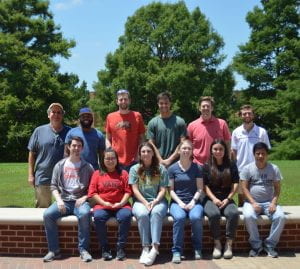Welcome!
The Pinney Research Group has extensive experience in synthetic organic chemistry with additional research expertise in medicinal chemistry. Well-established research projects focus on elucidating salient features of molecular recognition associated with the binding interactions of small-molecule therapeutic agents with selected bioreceptors, including proteins and enzymes. Specific research projects include: vascular disrupting agents (VDAs) to selectively starve tumors of oxygen and nutrients; inhibitors of tubulin assembly as antimitotic agents; inhibitors of cathepsin L (and/or K) to limit or arrest cancer metastasis; bioreductively activatable prodrug constructs (BAPCs) designed to target tumor-associated hypoxia as a means of imparting selectivity in anticancer drug delivery; antibody-drug conjugates (ADCs) designed to selectively deliver highly potent small-molecule anti-cancer agents; and inhibitors of cruzain as potential treatment agents for Chagas disease. These projects are collaborative between the Pinney Group (synthetic and medicinal chemistry) and Trawick Group (biochemistry and cell biology) both at Baylor University. These research efforts are complemented through a highly productive collaboration with Dr. Ralph P. Mason (UT Southwestern, Dallas, TX) focusing on state-of-the-art applications of small-animal tumor imaging and associated cancer biology. The efforts of this team (Pinney, Trawick, Mason) have resulted in multiple collaborative publications and shared grants (current NIH grant in renal cell carcinoma and previous NIH (VDAs) and CPRIT (targeting tumor-associated hypoxia) funding. These studies contributed to the establishment of a structurally diverse library of small-molecule inhibitors of tubulin polymerization that demonstrate dual-mechanism of action (functioning as both highly effective VDAs and potent antiproliferative agents). Separate studies resulted in the discovery of highly potent and selective inhibitors of cathepsin L and K that mitigate cancer cell migration and invasion, and hold promise as therapeutic agents for the treatment of pediatric osteosarcoma where lung metastasis remains a major challenge.
